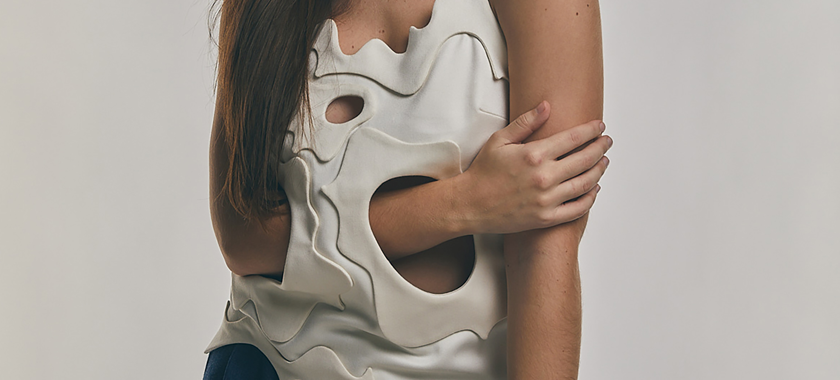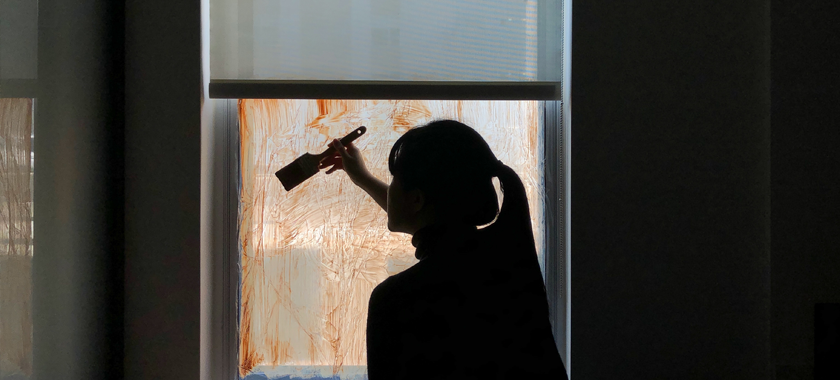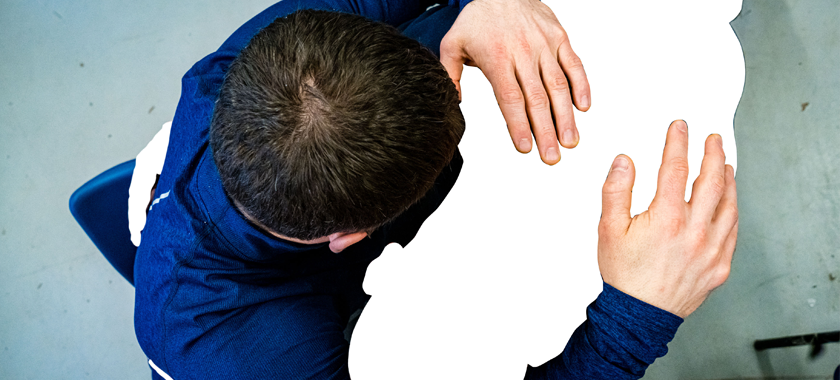
Grey Area: Copyright and Fair Use in AI-Generated Artworks
“Where does the artist end and the tool begin?” is one of many questions raised in a Center for Art Law panel discussion.
Center for Art Law’s 2023 conference brought together students, attorneys, artists, and arts and legal professionals to discuss contemporary and relevant topics at the intersection of art and law. Among the topics covered was one of the most pressing facing artists today: the use of Artificial Intelligence (AI) in art and the copyright issues surrounding it.
We’re sharing highlights from a panel discussion that featured the expertise of:
- Ron Lazebnik, Director of the Samuelson-Glushko Intellectual Property & Information Law Clinic, Fordham University School of Law (moderator)
- Amelia Brankov, art law and copyright attorney at Brankov PLLC
- Kelly McKernan, artist and representative in class action lawsuit against Midjourney/Stable Diffusion
- Scott J. Sholder, partner at Cowan, DeBaets, Abrahams & Sheppard, LLP
An Artist’s Perspective on AI
Kelly McKernan has been an independent artist since 2012, with clients including Evanescence, Heavy Metal Magazine, and Dark Horse Comics. They’ve worked with galleries including Spoke Art, Modern Eden, Arch Enemy Arts, and Gallery1998. McKernan’s work is primarily painted in watercolor and acrylic wash; over the last year or two, they’ve added some skills to their portfolio in digital painting. Most recently, McKernan says, they’ve become known as a prompt for artists as a popular style in AI-driven image generating platforms.
McKernan shared examples of their early work to provide more context for how they built their career over time. They shared influences including Salvador Dalí, John William Waterhouse, Frida Kahlo, Alphonse Mucha, and Gustav Klimt. They described developing their artistic voice in college at Kennesaw State University, and refining it in the years that followed. In 2012, McKernan was making enough to become a full time artist. “I worked very, very hard to develop something sustainable.”
Jump to March 2022, when generative text-to-image AI models emerged including Disco Diffusion, Stable Diffusion, and Midjourney. McKernan started getting tagged in images, and became intrigued, puzzled, and concerned about how her style is being represented on these platforms. “I can see my hands in these. They are like echoes of my stylistic choices, like unfinished sketches pulled from my sketchbook or from my brain,” they said.
McKernan noted that they had been excited for AI at one time, because they believed that AI art could be ethically created. “The source material could have been from copyright-free images, images from history, to people offering up their work, Creative Commons–a large amount of ethically-sourced data. However, it appeared that the data they chose to use was all this art that I had put online for the last 10-15 years of my life to share with my community, only to find it used against me and my career and the work that I’ve built.”
They continued: “I’m here to say nobody asked for my consent, nobody gave me credit, nobody offered compensation. My name and my art has been used to create my direct competition.”
The collective art community, including McKernan, have started fighting back. There’s a class action lawsuit that McKernan is part of in the works against Midjourney Inc, DeviantArt Inc (DreamUp), Stability A.I. Ltd (Stable Diffusion). “I did this because, what else do I have except my name and my work and all of the years that I’ve put into creating it.”
“How is it that my own name and art has been turned against me? Who is next? Writers, journalists, voice actors, lawyers? I’m asking you: How do we solve this? How do we protect human artists? How do we hold these exploitative companies accountable? How do I protect my data, my content, my artwork, my name, so I can keep doing what I love for a living.”

Copyright Law and AI
Ron Lazebnik cited two ways that the concept of liability can be applied to copyright law in cases relating to AI. One, cases against the individuals or entities who used works like McKernan’s to train generative AI. And two: once the generative AI generates new art, cases against the individuals or entities who had it generate that new art liable if that new art is close to the art of an artist like McKernan whose art was used to train that generative AI.
Lazebnik notes that in McKernan’s case, the question that the court will decide is the training of the AI, “the fact that they used all of these artists’ works without permission to create an AI that can generate new works.”
Amelia Brankov highlighted that the defendants in McKernan’s case (Midjourney Inc, DeviantArt Inc, and Stability A.I. Ltd) have recently filed a motion to dismiss the lawsuit, explaining the rationale behind their arguments against McKernan and her fellow plaintiffs.
“Stability A.I. is saying that the plaintiffs haven’t identified works that have been registered* and registration is a prerequisite to filing a lawsuit for copyright infringement. They’re also making the argument that the plaintiffs have not identified works from which copyright management information has been stripped, which they’re saying is a prerequisite to that claim. In addition to the copyright infringement claims, there are also claims for right of publicity violation. This is the use of someone’s name or likeness for commercial purposes. Stability A.I. argues that this is preempted by the copyright claim.”
Brankov continued: “There’s a lot of ink that’s been spilled in law review articles over the input, or ingestion, phase of AI and whether use of McKernan and other artists’ artwork (and any intermediate models) in training these models is an act of copyright infringement. I think that’s a really interesting question that will be addressed in the case.”
She addressed another potential factor in the case: the output part. “What if a user is using this AI to create new works? Is there an act of copyright infringement there? I think this is a little bit in play in this case. Some of the defendants are saying it can’t be vicarious infringement because they don’t have the ability to control user behavior, which is part of what a plaintiff would have to prove in a vicarious liability case under copyright infringement.”
Brankov emphasized that style is not protectable under the copyright law. “This is something that is hard for artists. This comes up a lot when there’s an ad agency or some other brand usage of artwork that is clearly inspired by an artist. But that’s OK under the law as long as it is not substantially similar to an identifiable work.”
*Under U.S. Copyright Law, plaintiffs do not have to register their works before a copyright infringement lawsuit can be made.
Fair Use and AI
“Generally, in theory once the plaintiff proves that they have a copyrightable work, one of the ways the defendant can escape liability, is to say ‘Even though I may have come close to your copyrightable work, I have done so in a way that does not require authorization from you.’ The most common route we take here in the U.S. for that is this defense of fair use,” said Lazebnik.
He then asked Scott J. Sholder to define and elaborate on the topic as it relates to McKernan’s case. “Fair use is a gray, complicated, nuanced affirmative defense that requires there to be an accusation of infringement. If you look at the motions to dismiss that were filed in the case, there is no fair use defense in the motion to dismiss because it is extremely fact sensitive. It is almost impossible to get rid of a complaint on fair use grounds.”
“There are four factors under section 107 of the Copyright Act. The purpose and character of the use, including whether the use is of a commercial nature or is for nonprofit educational purposes (1). The nature of the copyrighted work, whether the copyrighted work is more factual or more creative (2). Here, we’re talking about creative works. The amount of the underlying copyrighted work that’s been used (3). And the effect on the market or potential market for those works (4).”
Currently, rulings tend to focus on the importance of Factor 1, the purpose and character of use, and Factor 4, the effect on the market or potential market. For the former, “It’s the question of ‘transformativeness.’ There are volumes and volumes of litigation over what is considered transformative use. New purpose, new character, new function. Different circuits [courts] take different approaches,” said Sholder.
“On the question of copying, my understanding is that there is at the very least a temporary copy being made at some point during the scraping process of translating an original artwork into an AI artwork. How ephemeral that is, I don’t know. Whether there is an exception to infringement based on how fast and nonpermanent that copy is, is up to the court. Let’s assume there is a copy and there is infringing. And it is translated by software into 1’s and 0’s, coordinates on a complicated regression model. There is an argument there that Factor 1 could weigh in favor of transformative use.”
According to Sholder, the market harm factor may be really important in this case. “Even if you find a case in Factor 1 for transformative use, you’ve got full works—let’s say for the sake of this discussion—being transformed under the first factor and what pops out is essentially a market substitute. And here’s where you’re getting the market harm. This is where it will get complicated and very interesting,” he added.

Artists Who Use AI
Brankov works with artists who use AI and want to use AI, but want to feel that they’re “coloring within the lines” and not breaking the law or using it unethically.
She cited the example of artist Kristina Kashtanova, who created a graphic novel using original text and AI-generated images. Kashtanova filed for copyright, and the Copyright Office granted them copyright in the text that they created, as well as the selection and coordination of the other elements. However, they don’t have copyright in the AI-generated images that are contained within the novel.
Brankov noted the Copyright Office recently issued guidelines on how to register copyrighted works where AI is used. “I think the Copyright Office is taking the position that with respect to the images, it is possible that there can be human authorship that is copyrightable even though you use AI. But they’re saying that that authorship has to be copyrightable in itself. So then the question is: ‘How and When do you know when you have something copyrightable?’ It’s pretty clear that whatever is AI-generated is not going to cut it. You need to have human authorship, and the Copyright Office is saying things like the prompts that you put in, or if you generate 100 images or 1,000 images, and you curate and select one or two, that’s not what the copyright law protects. But, if you’re doing other things like adding creative elements to this AI-generated work, then you may have something at the end of the day that contains copyrightable creation and you can protect that. But where that line is, I don’t know where that’ll be.”
Sholder agreed, saying: “I don’t think anybody does. And neither does the Copyright Office, and that’s the problem. They’ve drawn a line for human authorship. Human-only authorship. A machine isn’t an author, a monkey is not an author…divine beings are not authors.”
While those filing for copyright have to disclose whether AI was used to create the work, Sholder wondered “What if they don’t? How is an examiner at the Copyright Office going to know what is and is not AI-generated? So it’s very hard to tell, people might not disclose. And where do you draw the line about what’s independently copyrightable?”
Something else to consider in this conversation is creative control. “Creative control is the big problem the Copyright Office sees with the AI engines. You can put in the same prompt five times, you’re going to get something different every single time. You have no creative control over it.”
Added Brankov: “That’s how the Copyright Office is making the distinction with Photoshop. With Photoshop, the human can direct it and have a clear outcome on how it’s going to go, but with AI, you don’t have that.”
Lazebnik envisions a couple of lawsuits in the long-run pushing back on where the Copyright Office wants to have this position vs where artists want to have this. “Not seeing the AI like a camera or Photoshop, but rather like a crew member on a film project with the artist as a director.”
In Conclusion
There is much gray area in copyright law, and the precedents set in previous fair use and copyright cases will help to set the tone for how it is interpreted in the future. The panel cited the decision in the 2021 Oracle v. Google case, and the Andy Warhol for the Visual Arts, Inc. vs Goldsmiths case, both elevated to the Supreme Court level, as examples.
What is clear: that this topic will continue to be discussed and debated for years to come.
–Compiled by Amy Aronoff, Senior Communications Officer
Art Law Conference 2023, entitled “An Entrance to Paradise” in connection with the recent opinion from the Copyright Office declining copyright registration to a work of art made by AI, was organized by Center for Art Law in partnership with the Artist Representation Society (ARS), a student group at Fordham Law School that is dedicated to empowering the artistic community by providing access to legal education and resources at the intersection of law and the cultural sphere.
Center for Art Law is a Brooklyn-based nonprofit that offers educational resources and programming at the intersection of law and the arts to foster vital and vibrant visual arts communities. Premium Members of the Center have access to hundreds of articles and research papers as well as the archives, video recordings, and materials of all past programs, including Art Law Conference 2023.
You can find more articles on arts career topics by visiting the Business of Art section of NYFA’s website. Sign up for NYFA News and receive artist resources and upcoming events straight to your inbox.